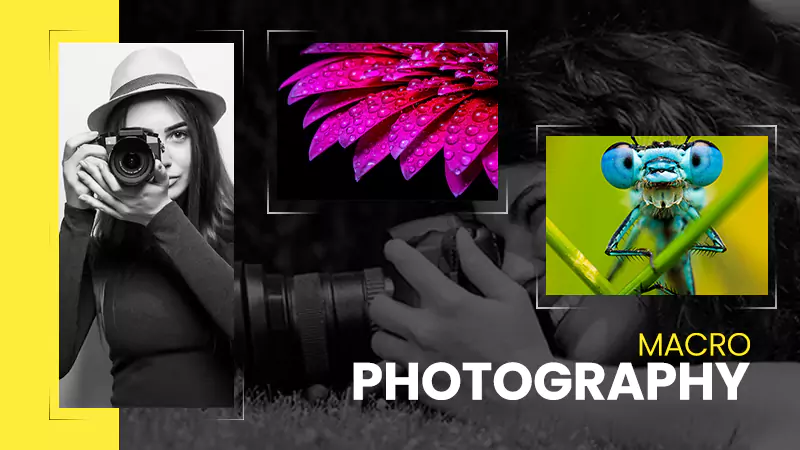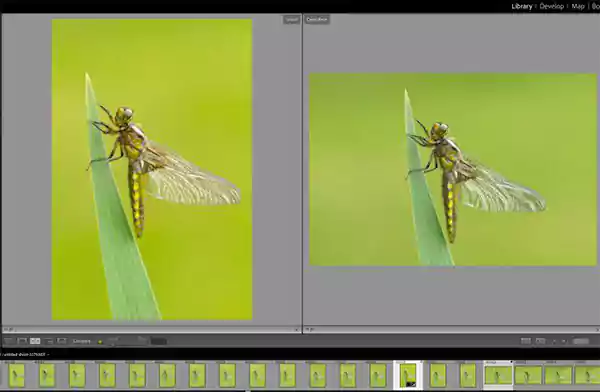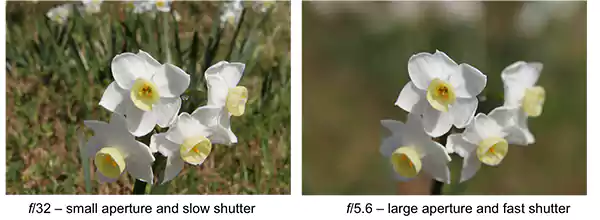
Macro photography has always been of particular interest to those who love capturing flowers, insects, and animals and showing their beauty from a closer look; it enables photographers to show the extraordinary beauty of ordinary subjects, bringing focus to be small and unnoticeable things around them.
Shooting macro requires two basic things: a camera, which is quite obvious, with accessories for close focus, and photo editing software.
Photo-Editing Software
Photo-editing software is a backup option to care about in advance. It helps to fix the mistakes made during the photo shoot, save the composition of the photo, or just add final artistic touches.
Such a powerful tool like VistaCreate can extend the functionality of your photo, as with the templates offered, you can create collages, online statuses, slideshows, etc.

Camera
When choosing the camera, go for the one that offers lens replacement. Thus, every time you change your professional photo focus, you can just buy a different kind of lens for a specific purpose.
Keeping that in mind, the further choice is not limited – any mirrorless or DSLR model from Pentax, Olympus, Sony, Nikon, Canon, Panasonic, etc. will make a great working companion for you; even your smartphone will be a good choice, provided you have other accessories.
Close-Focus Accessories:
- Macro lens – when checking online stores, you may encounter several types of macro lenses; let’s have a look at them:
- Short – 50-60mm – it’s the most affordable and lightweight and can be used as an everyday lens as well.
- Mid – 90-120mm – are perfect for portrait photography, as they provide a good distance from the object and create a good balance between size and weight.
- Long – 150/180mm – give you as much distance from the object as possible; they are bigger than others and a bit of a sell-out.
- Close-up filters – let you shoot at high magnification. However, they can reduce image sharpness.
- Extension tubes – cylindrical spacers that are installed between the camera and lens. Its primary focus is to change the lens’s minimum focus distance.
Tripod
A tripod isn’t a “must”; however, it’s an important tool to consider, as it keeps the camera stable and give the opportunity to take the best close-up. A tripod gives more chances to use a slower shutter speed and take multiple shots.
The camera settings are demanding as well:
The Mode
Choose Aperture Priority, if you are just getting to know macro photography and Manual Mode if you are a more experienced user of the camera:
- Manual Mode offers the most control and flexibility over the settings; you can adjust the aperture, ISO, and shutter speed;
- Aperture priority – you choose the ISO and the aperture while the camera adjusts the shutter speed.
Choice of Aperture
The aperture is basically the key element of exposure and defines the depth of the field:
- Large aperture – small f-number, such as f/2.8, will give little focus to the object
- A small aperture – high f-number, such as f/16, will bring focus to the whole subject.
Photo

Lighting
Start shooting macro with natural lighting, as it is the most beneficial for the photo, and each type has its own advantages:
- Cloudy weather – such a color gives softness and vibrancy to the objects
- Sunny mornings and evenings – the “golden hour” time is time for magnificent photos; every image benefits from its softness and warmth.
The biggest mistake is letting too much light in; harsh light leads to bad exposure, awful colors, and shadows. The time to avoid it is midday, including a few hours before and after it.
Shooting Distance
Shooting distance always impacts the sharpness of the details, especially when you are in the middle of macro photography scenes.
- To get a good shot, you need to place the camera on a surface which doesn’t move.
- The working distance is neither too long nor too short, as you will block or let in too much light.
- Working distance is also influenced by the focal length of the lens – the longer the length/, the longer the distance.
- Generally, the distance will be approximately 15 centimeters (6 inches) to ensure enough space for a good photo.
Composition
Composition is one of the cornerstones of any photo. It defines the central idea, as the positioning of the elements is vital. The best shots are taken by the rule of thirds – when you place the object on the right or left of a third of the photo, leaving the other ⅔ open. Such placement brings the focus to the subject and makes the whole vision complete.
Macro Photography makes the world of nature closer to people as even the tiniest and unnoticeable insects become the ‘main heroes’ of masterpieces. Experiment with the styles, learn to use various types of lenses and other close-up accessories, and head toward new photography skills.












